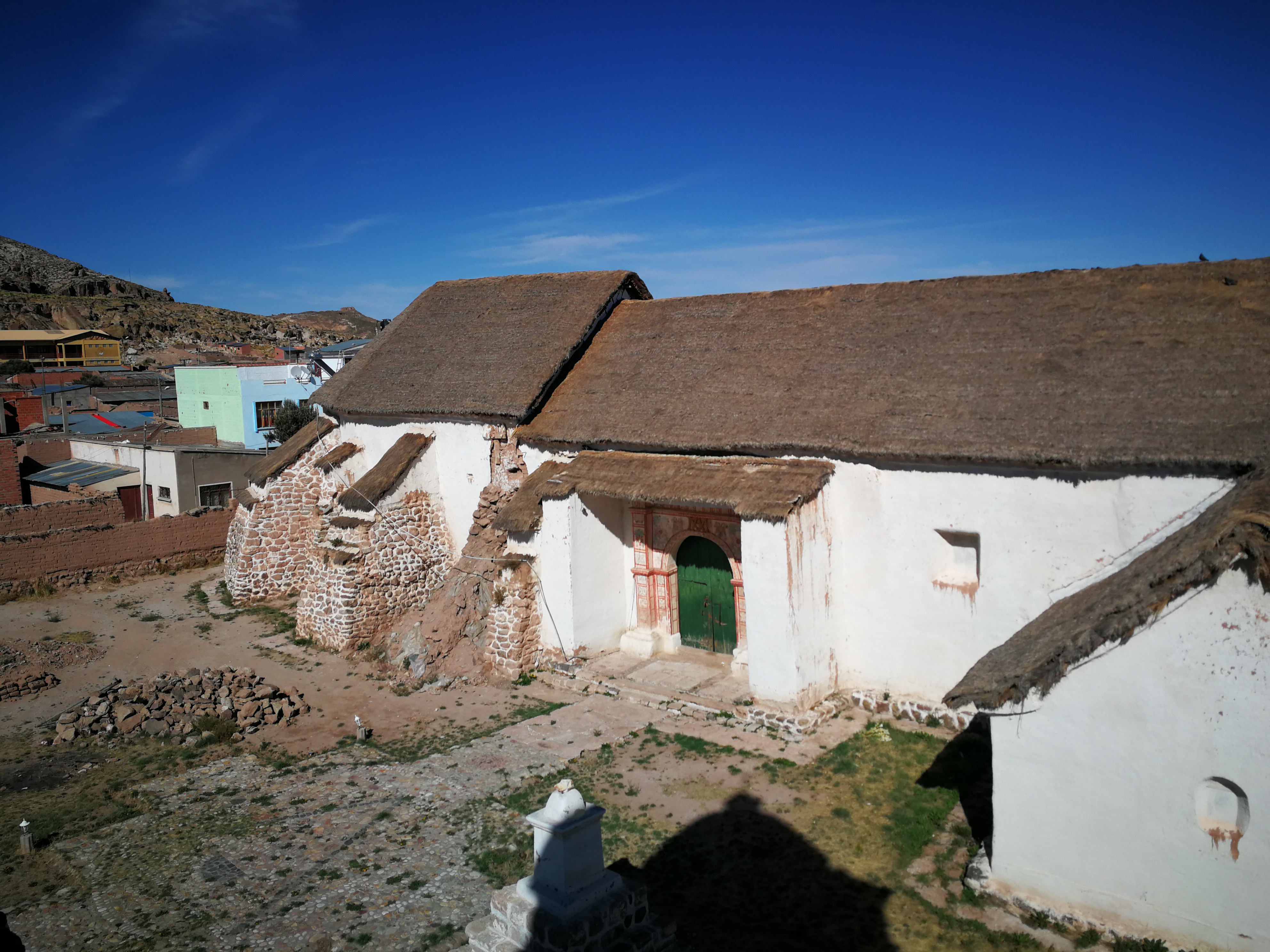Relationship and contrast of the Iberian in the Santiago de Curahuara de Carangas church in Oruro (Bolivia)
DOI:
https://doi.org/10.18861/ania.2022.12.2.3301Keywords:
church of Curahuara de Carangas, Iberian survivals, aftermath, conversion architecture, town planning, evangelizing message, design in Bolivia, religious communication, Bolivian highlands, colonyAbstract
This article will talk about the contrasts and survivals with the Iberian in the Santiago de Curahuara de Carangas church in Oruro (Bolivia), taking into account that Iberian was our colonization and that, as Marina Waisman says, "... you cannot leave to consider here the particular situation of Spanish culture that for several centuries had managed to bring together in a complex unity the expressive modes of the Arab and Christian worlds” (1993, p. 90).
For this, the historical investigation of the temple, the urban analysis, the analysis of the architecture, its references and the interior architectural qualities are carried out to end with the conclusions, where the relationships or survivals and the contrasts are listed.
Downloads
References
Claros, E. (2012), Santiago de Curahuara de Carangas. Colección de manuscritos históricos (1829-1917). Anuario de la Academia Boliviana de Historia Eclesiástica. N° 18, 11-45.
Matas Musso, J. (2011). Pervivencias Ibéricas en el camino La Paz – Carangas, Universidad Católica Boliviana.
Mesa, J. y Gisbert T. (1997), Holguín y la Pintura Virreinal en Bolivia, Editorial Juventud.
Nicolini, A. (1997). La relación de la iglesia con el espacio urbano hispanoamericano siglos XVI y XVII, Universidad Nacional de Tucumán
Waisman, M. (1993) El interior de la Historia. Escala.
Artigas, J. (2003), Arquitectura a cielo abierto como una invariante continental. Jaime y Salcido Editor.
Chueca Goitia, F. (1947), Invariantes castizos de la arquitectura española. Editorial Dossat. Madrid.
Jemio, J. C., Montero, R. y Saravia, R. (1990). Informe proyecto: misión Oruro y Potosí- Catalogación del Patrimonio Histórico. I.B.C., La Paz, Bolivia.
Gisbert, T. (1994), Iconografía y mitos indígenas en el arte, Editorial Gisbert
Mesa, J. de y Gisbert, T. (1997) Arquitectura Andina, Editorial Don Bosco.
Mesa, J. de y Gisbert, T. (1985). Pintura Mural en Bolivia (S. XVI al XIX). Editorial Offset Color.
Mesa, J. de y Gisbert, T. (2002). Monumentos de Bolivia. Editorial Gisbert.
Romero, J.L. (1976). Latinoamérica, las ciudades y las ideas. Ed. Siglo XXI.
Salcedo, J. (1990). El modelo urbano aplicado a la América Española. Su génesis y desarrollo teórico práctico. En: Estudios sobre urbanismo iberoamericano. Junta de Andalucía.

Downloads
Published
How to Cite
Issue
Section
License
Copyright (c) 2022 Josefina Leonor Matas Musso

This work is licensed under a Creative Commons Attribution 4.0 International License.
The journal and its contents are licensed under the Creative Commons - Attribution 4.0 International License (CC BY 4.0). It is possible to copy, communicate and publicly distribute its content as long as the individual authors and the name of this publication are cited, as well as the publishing institution (Universidad ORT Uruguay).

